Myles Garrett and the Browns’ Difficult Decision

INDIANAPOLIS — “Hello, Cleveland!”
Those were the words of NFL Network analyst Mike Mayock as Texas A&M phenom Myles Garrett crossed the finish line of the 40-yard dash in a staggering 4.64 seconds on Sunday, putting a bow on the show that most scouts expected he’d put on here at Lucas Oil Stadium. And that run by Garrett, who weighs 272 pounds, only punctuated what everyone knew when we arrived in Indy: Garrett is the odds-on favorite to go first overall.
“He’s good,” texted an AFC exec from the stands, “like everyone knows.”
“Lol. How about him?” texted one AFC area scout assigned to A&M. “Special.”
How special? If Cleveland takes Garrett first overall, he’ll be the third edge rusher in the past 15 years to top the draft. Here’s how he stacks up, athletically, against the other two.
Myles Garrett, Texas A&M, 2017
6'4", 272 lbs.; 40: 4.64; Vertical: 41"; Broad jump: 10'8"; Bench: 33 reps.
Jadeveon Clowney, South Carolina, 2014
6'5", 266 lbs., 40: 4.53; Vertical: 37.5"; Broad jump: 10'4"; Bench: 21 reps.
Mario Williams, N.C. State, 2006
6'7", 295 lbs.; 40: 4.73; Vertical: 40.5"; Broad jump: 10'0"; Bench: 35 reps.
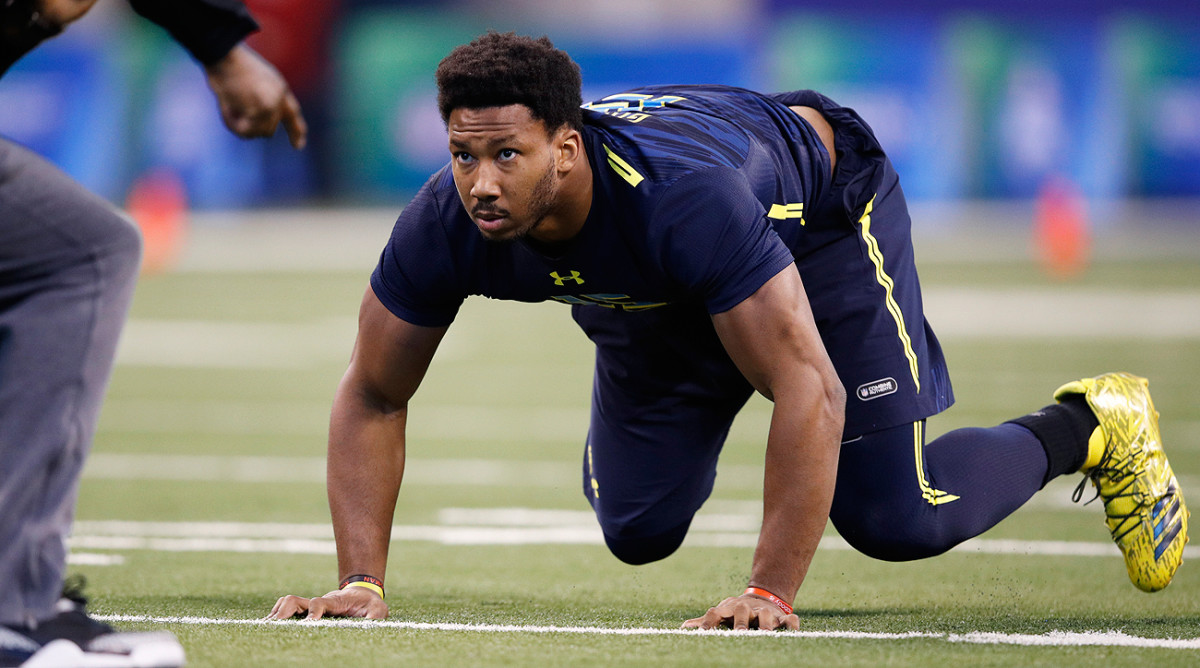
In short, on Sunday at the NFL scouting combine, Garrett confirmed that he belongs with the freakiest of pro football’s athletes. (Good luck to a historically strong defensive back group that takes the FieldTurf today in trying to top what we saw from Garrett.)
And Garrett didn’t make the April 27 decision for the Browns any simpler. The reality is that the history of taking a pass-rusher first overall is just so-so (you can go back to Cleveland’s Courtney Brown in 2000 for more evidence), and the Browns haven’t had a real long-term answer at the most important position on the field since local folk hero Bernie Kosar led the team in the ’80s.
Big call? Yeah, probably the biggest one in an offseason full of those for the Browns.
Work on the first pick “is gonna be extremely detailed,” Cleveland coach Hue Jackson said over his cellphone Saturday, between workouts and interviews. “We’re slowly starting into the process. You work through the Senior Bowl, you work through the combine, next thing that will come up will be private workouts, pro days, your top 30 visits. Then you have to take all that information and start into making decisions.
“We’re just starting into it; there’ll be so much more.”
* * *
Since the boss, Peter King, spent the weekend in Boston (where I live, and where the MIT Sloan Sports Analytics Conference was) and not here (where I am), I’m taking the reins for today’s column. And we’re going to get you more on how the quarterbacks here did, Jaylon Smith’s drop foot, the strange case of Reuben Foster and the Patriots’ championship ride, with plenty of draft and free agency nuggets as well.
But we’ll start right there with Garrett, and Cleveland, and the global picture of what’s ahead for an embattled Browns franchise.
If the current regime gets this once proud franchise back to respectability, the moves GM Sashi Brown, Jackson and company make over the next six months figure to be a gigantic part of it. Cleveland has 11 picks in April’s draft, five in the first 65 selections and 10 in the first five rounds. The Browns have more than $100 million in cap space, and only one big free agent (Terrelle Pryor) to re-sign.
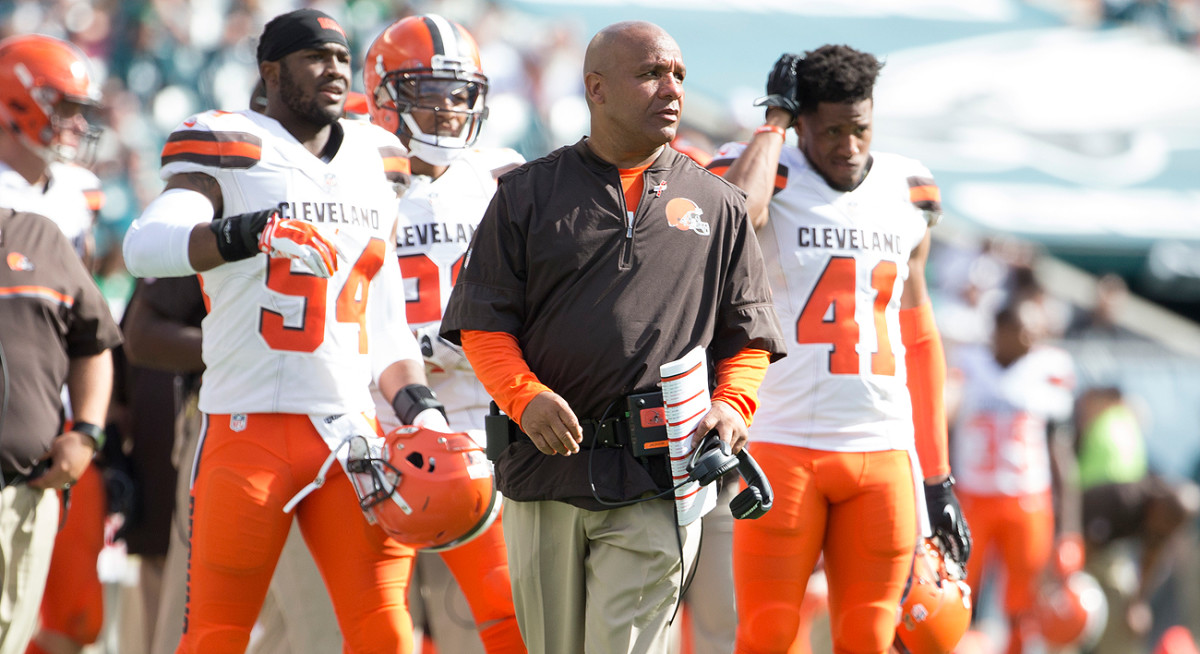
“It’s very exciting. But it’s pressure-packed too,” Jackson said. “You gotta get it right, because these are opportunities to take this organization in a whole new direction. So the thought of doing it the right way, doing it right all together, it’s on all of our minds. We want to get this right. We know this could catapult us into the future, and we have a lot of different ways to have success. “
Now, here’s the unspoken truth about the most interesting offseason confronting any team in the NFL: The analytically-driven approach that drove the accumulation of all those assets now must give way to something as simple and old as the league itself.
The Browns need to go get better players. The good news? As Jackson said, the Browns have plenty of different ways to get that done. In fact, I’m not sure there’s ever been a team that’s entered an offseason quite like this…
• Roster: The Browns currently list 74 players on their roster. More than half of them—40!—have either one accrued NFL season or none. There are just 10 players who have been in the league for more than four seasons.
• Cap space: No one in league history has had so much room. The Browns figure to enter the league year, depending on what happens with Pryor, with about $102 million to spend. The entire salary cap in 2006: $102 million. As recently as 2013, the cap was just $123 million.
• Draft picks: two first-rounders (1, 12), two second-rounders (33, 52), one third-rounder (65), two fourth-rounders (108, 142), three fifth-rounders (145, 177, 183), one sixth-rounder (187). Business Insider ran the numbers: By the old Jimmy Johnson draft-value chart, the Browns picks add up to 4,145 points. The 49ers have the second most draft capital this year behind Cleveland. They’re at 2,656 points.
It’s pretty simple. The Browns have to come out of this offseason with some valuable concrete as Jackson, Brown, vice president of player personnel Andrew Berry and chief strategy officer Paul DePodesta try to lay a championship foundation.
All eyes are where they always are in the NFL: Under center. So that was Question No. 1 for Jackson: Do you have to come out of this offseason with your long-term quarterback?
“We hope to,” Jackson said. “We go into it looking to solve that. We all know until we have our quarterback, the guy that we want on our team [long-term], it’s hard to move forward. Now, that said, we’re not sure that guy is not on our team yet. I’m not trying to discount the guys that are on the team. You’re just always looking to improve everywhere that you can. We’re going to search high and low.”
That search has already begun.
The background work on the veteran market is just about complete. “Every quarterback who has potential to be a free agent or someone that could be traded, I’ve watched everything they’ve done,” Jackson says. He can’t say the names, per league rules. But you can guess them. Jimmy Garoppolo. AJ McCarron. Mike Glennon. Tyrod Taylor. And probably a few more.
The work on the college kids is underway, but not nearly complete. Jackson came to the combine having watched five or six full games from each of the top half-dozen or so college signal-callers, and the team spent the last few days interviewing them and watching them work out.
“It’s a very intriguing group,” Jackson said. “You have a guy who’s won a national championship, you have a guy who hasn’t played a ton of football, you have guys who have played a ton of football, you have guys who can throw the ball all across the field, you have guys with football IQ through the roof. You have guys with a lot of different skill sets. You gotta make sure that you dig through it all.
“We just gotta spend more time with them. It’s not just the tape. You’ve had a 15-minute conversation with most of them in a meeting room. That’s not enough time.”
By the time April rolls around, Jackson says he’ll have watched every snap played by all the top draft-eligible quarterbacks, and given his input to his front-office colleagues. “I hope they lean on my expertise at the position as we get closer to making a decision about the position,” he says. “But we’re doing this thing collaboratively.”
Like everyone else, Jackson was impressed with what he saw from Garrett on Sunday. And though neither he nor anyone else in Cleveland came out and said it, it sure looks like it’s Garrett vs. the quarterbacks for the first overall pick, with guys like Alabama defensive linemen Jonathan Allen and Stanford pass rusher Solomon Thomas as dark horses.
And that’s one of a few dozen decisions the Browns know they have to get right over the next two months. It’s not overstating the situation to say the future of the team’s current brass rides on it.
“Where we go, where we’re headed, this offseason is such a huge piece,” Jackson said. “We’re all thinking it, from top to the bottom, everyone’s focused on getting this right. … It’ll determine what we all achieve in the future, whether we win, and win consistently. And the only way to do that, you have to have great players.”
* * *
No Clarity in the QB Derby
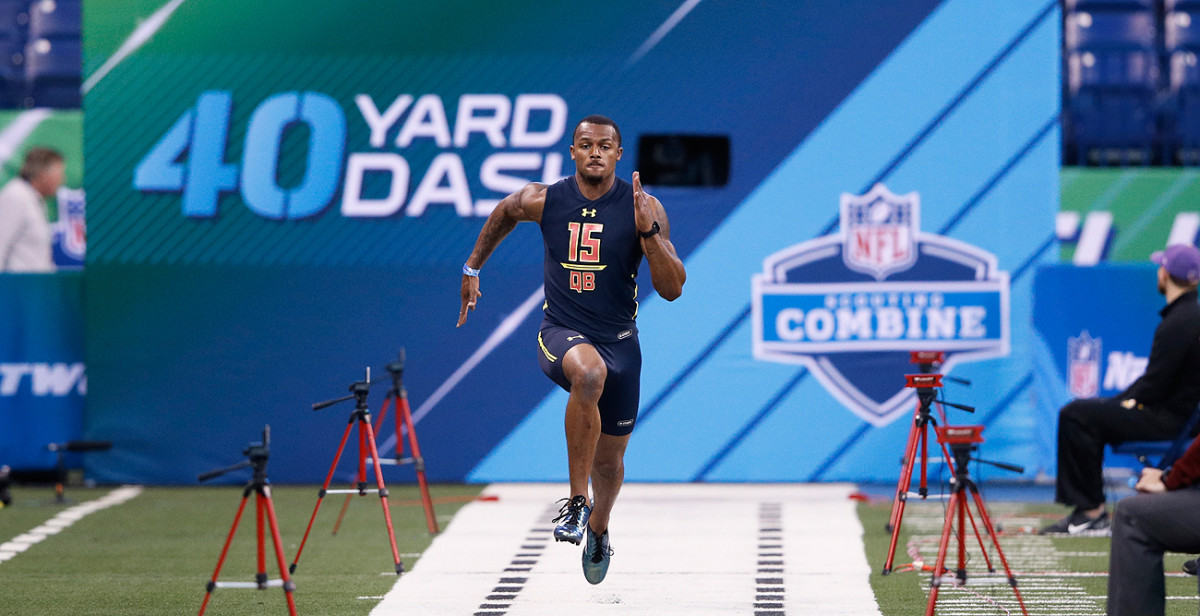
After spending a week in Indianapolis, and four days last month in Mobile, I’d tell you there are five quarterbacks with a shot at going in the first round—Notre Dame’s DeShone Kizer, Texas Tech’s Pat Mahomes, North Carolina’s Mitchell Trubisky, Clemson’s Deshaun Watson, and Cal’s Davis Webb.
In what order, I don’t know. And I don’t think NFL teams have that figured out yet, either. But some themes to the class have emerged.
“First off, what stands out, I think there’s only one guy that’s ever taken a snap from under center,” Chiefs GM John Dorsey told me. “How about that one? It shows how we’re evolving into a spread-option era. Then, what you have to analyze is can they spit out a play in the huddle? If you look at the majority of these guys, everybody’s signaling everything in from the sideline.
• THE COLLEGE COLUMN ON THE QBS: Mitch Trubisky | Deshaun Watson | DeShone Kizer | Patrick Mahomes | Nathan Peterman & Davis Webb | Chad Kelly
“These are the types of things people are looking for as they sit and talk to these players. Can they sit and regurgitate an offensive play? That’s hard to do, especially in [our] system, it’s really hard to do. But on the whole they’re a more athletic group.
“Are there any finished products here? I don’t think so. So where are the warts, and are you willing to live with the warts? That’s what people are asking.”
I then asked Dorsey if he thought any of the quarterbacks are ready to play. He smiled and said, “Me personally?” Then a long pause, another smile, and a “No.”
Again, that doesn’t mean there’s not plenty to like with the group, and more to dissect. So I asked one AFC personnel director to break down for me what he saw from the quarterbacks. He missed Webb but got the other four. Here are his notes, with the caveat he wanted to emphasize—these guys are throwing different routes to receivers they don’t know …
• Kizer: Big, strong, good arm and velocity. Smooth release. Inconsistent feet, timing and accuracy. Had the same misses on multiple reps.
• Mahomes: Tight release, but thought he would be more consistent and better throwing deep.
• Trubisky: Athletic, good arm strength. Some inconsistency in accuracy and timing and deep ball.
• Watson: Very consistent, athletic. Easy motion. Easy ball to catch.
A winner for the week? It was Watson. He blew teams away in interviews to the point where I know a couple clubs that weren’t wild about him were eager to go back and take a second look at the tape to see if they missed on their evaluation. And his field work was very good.
I wrote last month that Trubisky was the leader to be the first quarterback taken, and I still think that’s probably the likelihood. But Watson has gained some ground.
* * *
What’s Happening in Washington?
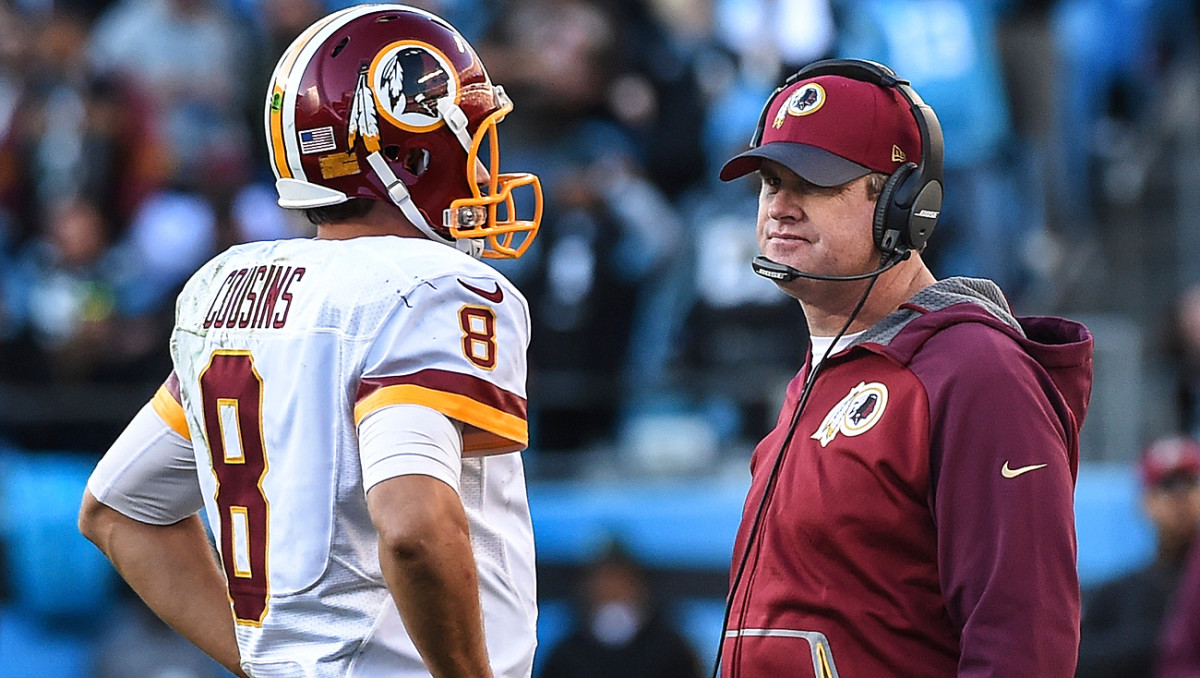
A year ago it seemed like the old Redskins circus had finally closed up shop. Jay Gruden grew into a very good head coach with a rock-solid staff behind him, and Washington had a potential long-term answer at quarterback and arguably the best talent-evaluator of the past decade as their GM. The team was coming off a playoff berth. There was no drama.
Not anymore. It’s been a strange offseason already in Washington. Here’s a quick synopsis.
• Staff: Gruden lost offensive coordinator Sean McVay to the Rams as head coach, and the Skins fired defensive coordinator Joe Barry. The team wound up elevating quarterbacks coach Matt Cavanaugh and linebackers coach Greg Manusky to replace them.
• Quarterback: Kirk Cousins has been franchised again, and there’s legitimate uncertainty about his immediate future.
• Scot McCloughan: The third-year GM was left home from Indy amid a twister of speculation. The given reason: His 100-year-old grandmother died Feb. 6. His past demons were raised on D.C. radio by ex-Redskins tight end Chris Cooley. Given that no one in football is better/more passionate about scouting the draft than McCloughan, his absence was glaring, and the future here looks murkier than it did.
• Free agents: The offense could look significantly different next year with receivers Pierre Garçon and DeSean Jackson both expected to draw robust interest as free agents.
One source described the vibe in DC succinctly: “Just a bunch of strange s---.”
There are lots of dominoes that have to fall soon. As for the big one, I don’t think the Skins are afraid to lose Cousins, and the reason is Colt McCoy. Is the 30-year-old McCoy a 10-year answer for Washington at the position? No. But he can be what Cousins can’t be at this point, and that’s a bridge quarterback, which is why the question isn’t Cousins versus McCoy in a vacuum. It’s the brass buying Cousins and hitching its job security to his successes and failures, versus renting McCoy while looking for a younger upgrade at the position.
The latter would be risky as hell, to be sure, and I wouldn’t call it likely. But the Redskins do believe they can win in the short term with McCoy, and there’s a feeling that it’d be better to just resolve the Cousins situation now—whether it’s giving him a new deal or trading him—and not setting up to be in this position again in spring 2018.
Of course, the brass and the team could look a lot different by then. Stay tuned.
* * *
Jaylon Smith’s Drop Foot
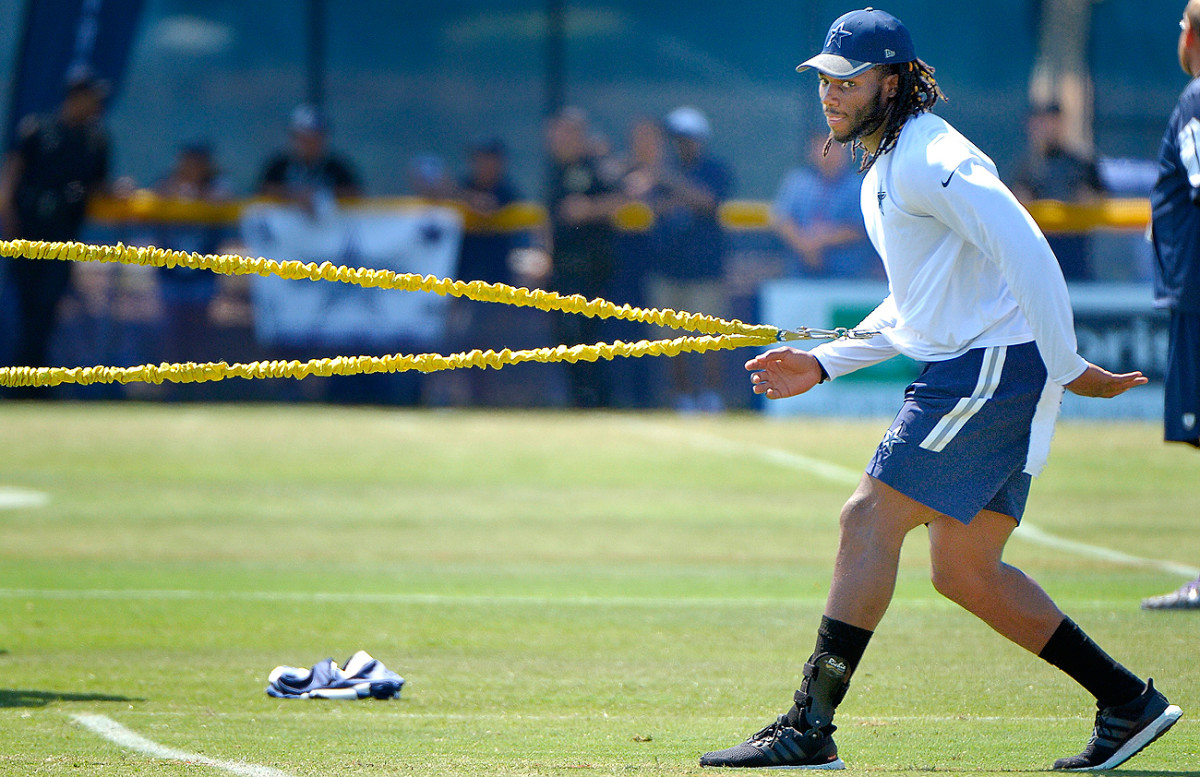
Cowboys owner Jerry Jones told Dallas reporters on Saturday that 2016 second-round pick Jaylon Smith would be able to play in the fall with the help of an AFO (ankle/foot orthoses) brace.
Now, the whole truth, as I understand it: The team very much views any and everything it gets from Smith in 2017 as a bonus. In last year’s draft, nerve damage and a resulting case of drop foot knocked Smith, previously a potential top-5 pick, out of the first-round altogether. The nerve has started firing again, and he’s gained foot activation, but he’s nowhere close to full strength and may never get there.
Can he be effective playing with the brace? This sounds harsh, but it’s unlikely.
The brace is designed to allow the most basic of things—your foot to clear the ground when you take a step forward. It’s designed to stabilize but it doesn’t recreate the energy you normally generate when you push off your foot. And that’s why Dr. Thomas Gill, the former Patriots team doc who saw ex-New England RB Robert Edwards go through this scenario almost two decades ago, is skeptical on Smith.
“A hinged AFO will allow you to have your foot flex up, but not have it slap down,” Gill said over the weekend. “So basically you wear a brace so when you’re running or walking, your foot can have clearance when you swing your leg forward. But it’s not built for speed.
“Robert Edwards, he played with it for a while but lasted less than a season doing that. And he was a running back. You have to be a freakish athlete where you can afford to lose 20 or 25 percent of your speed, at least, and 45 percent of your power, and still be able to compete in the NFL.”
And playing with the ailment isn’t without risk, either.
“The risk is that you’re going to be more prone to injury. Your foot’s going to get caught in an awkward position,” Gill continued. “So if you’re in a pile-up, you know the classic high ankle sprain mechanism where the guy falls on the back of your leg? That leg’s going to be a lot more prone to getting caught in an awkward position, because he can’t point his toe.”
Now there’s a chance the nerve improves over time and Smith gets back to full speed down the line. But Dallas isn’t counting on anything like that in the short term.
* * *
A New Look at the Patriots’ Title Season
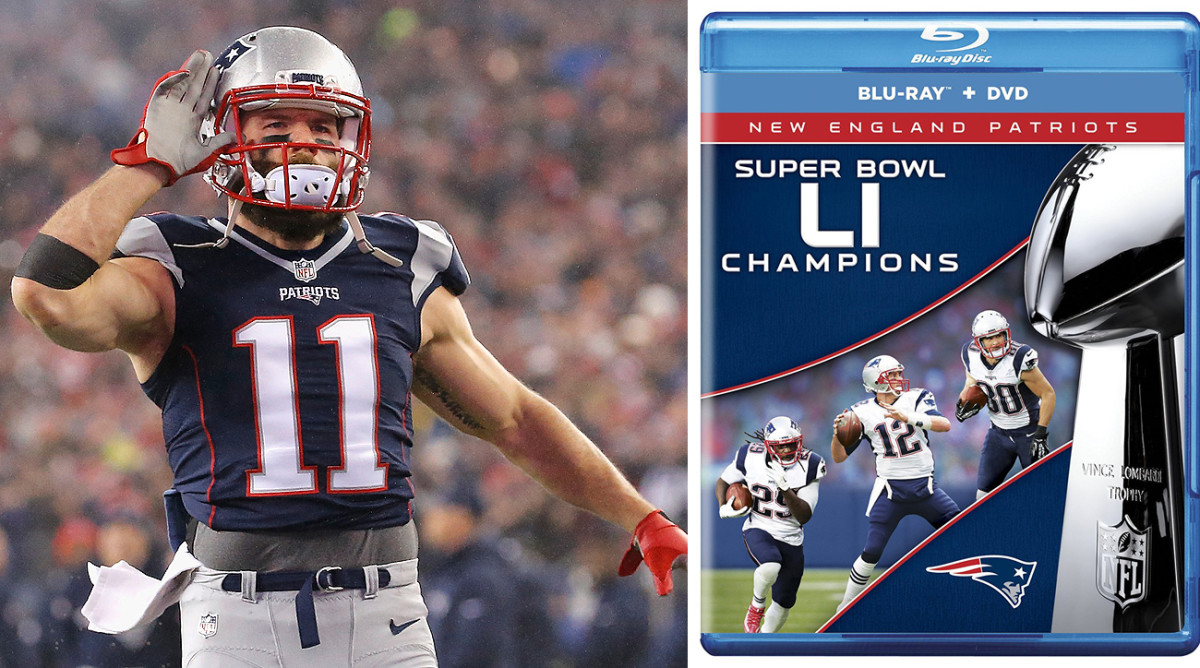
If you thought the wires coming out of the Super Bowl—whether it was on SoundFX on NFL Network or Inside the NFL on Showtime—were particularly strong this year, you aren’t alone. The people who shot it at NFL Films feel the same way.
And this week you’ll get another way to enjoy all of that with Cinedigm and NFL Films’ release of “Super Bowl LI Champions: New England Patriots” Tuesday on Blu-Ray Combo Pack, DVD and Digital HD.
They were nice enough to send me an advance copy. Here are a few things I hadn’t seen previously but got to see thanks to the work of all the NFL Films cameramen and sound people.
1. Before the Patriots’ Week 3 win over the Texans, Bill Belichick showed a little worry as rookie Jacoby Brissett readied for his first NFL start at quarterback. “He looks a little wild here in warmups,” the head coach said to offensive coordinator Josh McDaniels, who then responded, “Eh, a couple. He threw the ball well to the receivers. He’ll be fine, he’ll settle into it.” (Brissett went 11 for 19 for 103 yards—no TDs, no INTs—and ran for a touchdown in a 27-0 win over the Texans.)
2. During the highlights of the team’s comeback win over Jets in November, someone who sounds like Belichick is voicing over a shot of Brady saying, “He’s as good a situational football player as I’ve ever been around.”
3. Rob Gronkowski didn’t wait long to kick off the celebration after setting the Patriots’ team record for career touchdowns on Oct. 30 in Buffalo, nor did he lose track of the number. As he was leaving the field after that 53-yard score, he shouted down the sideline, “That’s 69, baby!” (Not sure what he means.)
4. Julian Edelman is basically the main character. In the Houston playoff game, Edelman is shown bantering with refs. “I get so defensive, I’m sorry,” Edelman said. Chris Hogan then jumped in—“He’s sensitive”—before Edelman added, “My therapist yells at me for that.” Then, in the Steelers playoff game, you see Edelman blocking rookie corner Artie Burns. “I’m here! I’m here!” barked Burns. Edelman coolly shot back: ”The fact that you gotta talk about it means you’re not.”
5. Patriots messaging early in Super Bowl 51 was pretty much how they have said it has been—level. “Just relax, go back out there, we had a nice drive going, we just gotta keep going,” explained long-time line coach Dante Scarnecchia in the first half. “We gotta keep doing the same s--- we do.”
6. McDaniels, similarly, delivered this at halftime: “Do you believe we’re gonna win? I do, too. Let’s just play our best half. I don’t want anyone to do anything that you can’t do. Don’t try to make it all up in one play, just play each play by itself, OK?”
7. And here’s one from defensive tackle Alan Branch in the third quarter: “They ain’t running no more, yo! They ain’t running no more!” The Falcons had 86 rushing yards on nine carries before the break. They went for 18 on nine carries after the break.
Add it up and this is a good, entertaining watch. You can pre-order it here before it’s released on Tuesday.
Just make sure you have a working DVD player. Those, evidently, aren’t as easy to find as you’d expect them to be. I couldn’t locate a place that sells them anywhere in downtown Indianapolis. I had my cab driver stop at places along the way en route to the airport. No dice. And ultimately I had to wait till I got home to watch it anyway. So there’s my advice for the week.
• TOM BRADY IN MONTANA WITH PETER KING: Part 1 on the Super Bowl 51 comeback || Part 2 on lifestyle, legacy and much more
* * *
Quotes of the Week
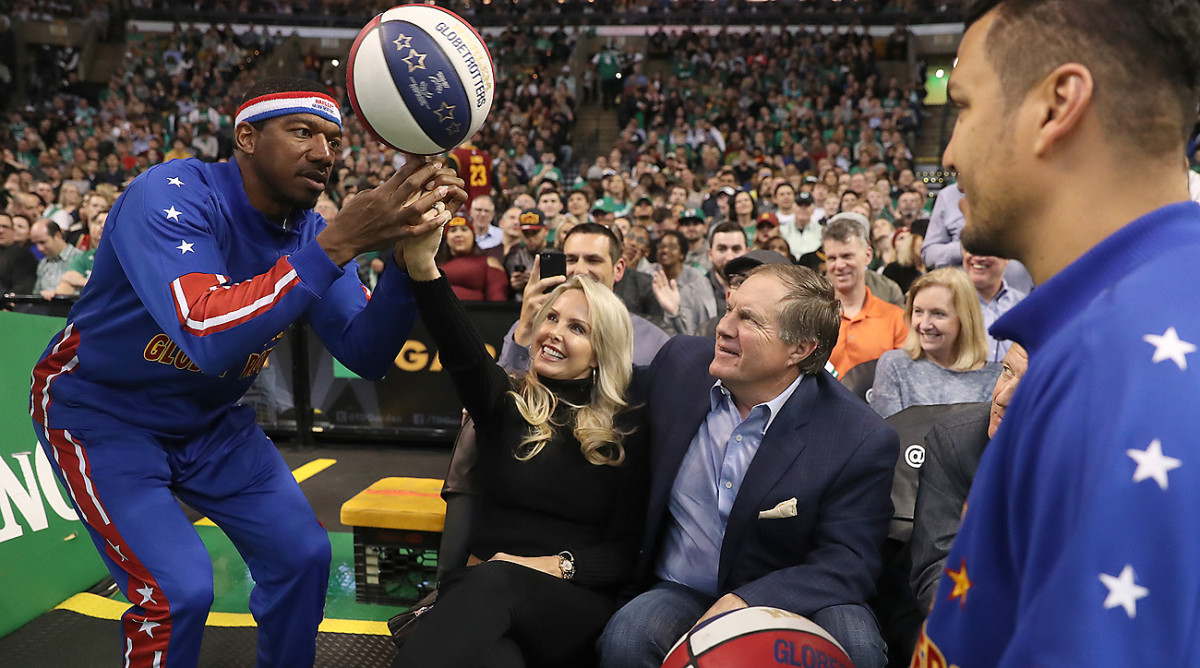
I
“You know, Willie, one of my best memories was right here on this field, when you made that short-yardage stop there against the Colts. And then the next year we opened with them and you made the sack that took Vanderjagt out of field-goal range, and I think that’s where Vrabel got them on the fake timeout too—and then they changed the rule on that. But anyway, you got the Colts back to back, two years in a row, here and in Foxborough.”
—Patriots coach Bill Belichick, in the booth with NFL Network’s Rich Eisen and Mike Mayock, to his old linebacker Willie McGinest.
This Belichick has always been the most entertaining Belichick—and we get to see it every so often. In the booth with Mayock and talking to McGinest, the seven-time champion was jovial, flashed his photographic memory (except that the first McGinest play was actually at the old RCA Dome, not Lucas Oil Stadium) in the details, and even got a shot in at his old friends at the competition committee and with the Colts.
II
“Dominate here and not make any more crazy videos.”
—Garrett, when he was asked what he planned to do to prove he was worth the first overall pick.
On that first part … Check. We’ll see on his second goal, which is a reference to the video in which he asked his hometown Cowboys to acquire him.
III
“He has elite versatility. The guy could’ve started for us at receiver. He’s one of those guys who can do so many things, and in a league that—especially with what New England and all of them do—really puts a premium on versatility. I mean, there’s nobody out there better. And he’s still getting better and better all the time. He missed his entire first year, so there were some things developmentwise. He was just really getting better quickly. And he still has a long ways to go. … Yeah, he has special ability, but his versatility sets him apart. He can get you the tough yard in the I, he can play on third down, you can put him out at receiver. He threw a touchdown pass this year. He can literally do just about anything.”
—Oklahoma offensive coordinator Lincoln Riley on Joe Mixon.
This is a leftover from last week’s Game Plan lead on Mixon, and explains why Mixon will be drafted, and maybe before Day 2 is done. Ezekiel Elliott’s value last year was that he was built like a big back but had skills of a smaller runner. Mixon isn’t Elliott, but he is that way too. His pro day is Wednesday. He told me he hopes to post a 4.39 in the 40-yard dash.
IV
“When you interview these guys, there’s a little bit of a BS radar that goes up. And if you detect it, I think everyone has a pigeonhole. Just make sure your pigeonhole isn’t full of crap.”
—Falcons GM Thomas Dimitroff to Mike Florio on PFT Live.
Amen. I think.
V
“He provided an example of how a pro should approach his craft and established his place in NFL history as one of the best at his position.”
—Jets GM Mike Maccagnan in a team-issued statement announce the release of cornerback Darrelle Revis.
This used to be true about Revis, without question. And Maccagnan is one of the nicest, most well-intentioned people in the NFL, so I understand not wanting to light a guy up as he’s pulling out of the driveway. But it feels like this is sort of the opposite of what Revis was in 2016, and what he’ll need to prove to other teams as he pursues his next football job.
* * *
Tweets of the Week
I
Myles Garrett: 4.64, 1.63 (at 272 pounds)
— Dane Brugler (@dpbrugler) March 5, 2017
DeMarcus Ware: 4.65, 1.70 (at 251 pounds)#Browns
II
I want a RB who refuses 2 do the verticle leap. Low man win's
— PFT Commenter (@PFTCommenter) March 3, 2017
III
Out of context Christian McCaffrey quote. "I'm average. I'm not elite."
— Lindsay Jones (@bylindsayhjones) March 2, 2017
Context: He was talking about his skills as a pianist.
IV
The 2-year extension for #Redskins coach Jay Gruden was struck tonight at Prime 47 in Indianapolis. Good times. #NFLCombine
— Ian Rapoport (@RapSheet) March 5, 2017
* * *
Stat of the Week
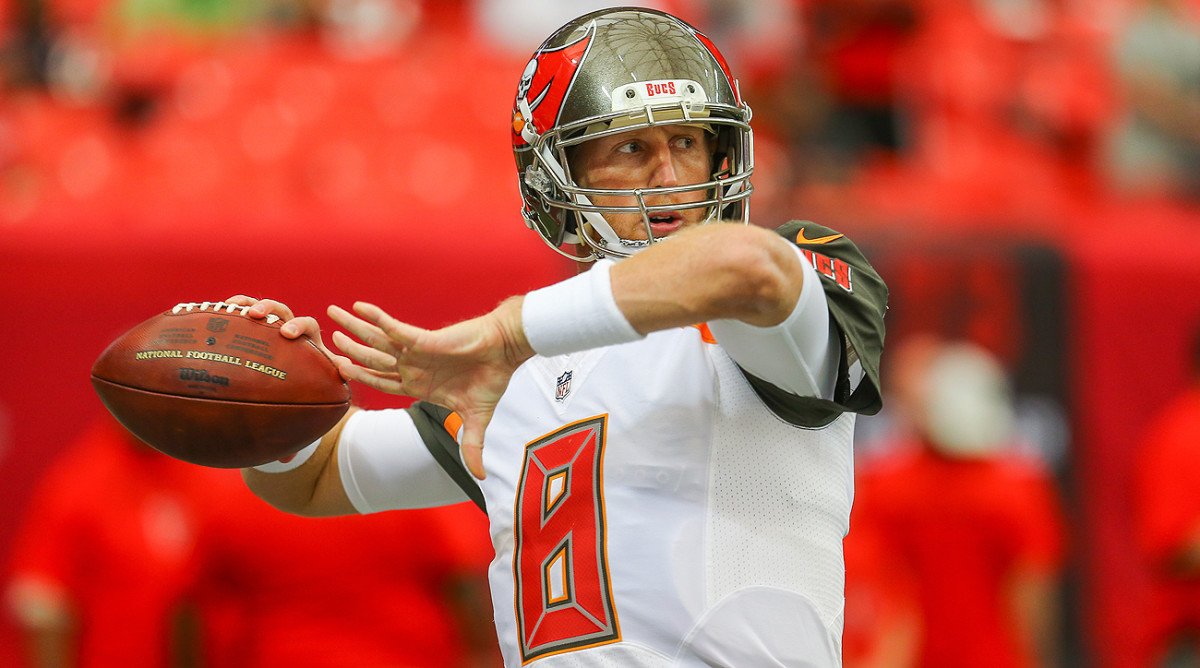
These are the 22 quarterbacks who are on deals for the 2017 season that average $16 million per or more.
• $22 million-plus: Andrew Luck ($24.6M), Carson Palmer ($24.4M), Drew Brees ($24.3M), Kirk Cousins ($23.94M), Joe Flacco ($22.1M), Aaron Rodgers ($22.0M).
• $19 million to $21.9 million: Russell Wilson ($21.9M), Ben Roethlisberger ($21.8M), Eli Manning ($21.0M), Philip Rivers ($20.8M), Cam Newton ($20.8M), Matt Ryan ($20.8M), Tom Brady ($20.5M), Ryan Tannehill ($19.3M).
• $16 million to $18.9 million: Jay Cutler ($18.1M), Tyrod Taylor ($18.0M), Tony Romo ($18.0M), Brock Osweiler ($18.0M), Matthew Stafford ($17.7M), Sam Bradford ($17.5M), Alex Smith ($17.0M), Andy Dalton ($16.0M)
Now, Cutler is coming off the list, and Taylor and Romo might, too, though they could also just wind up back on soon thereafter. Before too long, Derek Carr—eligible for a second contract this offseason—will be joining the list too, and Jameis Winston and Marcus Mariota will be in the not-so-distant future as well. Jimmy Garoppolo is ticketed to land on it too, if he’s traded.
You get the picture. Here’s the point: Quarterbacks aren’t paid like everyone else.
So when this year’s sticker-shock quarterback, Tampa Bay’s Mike Glennon, gets more than $12 million per this week, and gets a lot closer to what Osweiler got last year than most think, don’t react by letting your jaw hit the floor.
Say Glennon goes to Chicago, and the Bears draft a rookie QB with the third overall pick (last year’s third pick, Joey Bosa, makes $6.47 million per year). They’re probably then allotting a little more than $20 million to the position—or less than they did last year at quarterback with Cutler and Brian Hoyer on the roster.
This is just the price of doing business at the most important position in sports.
* * *
Factoid That May Interest Only Me
I
When Deshaun Watson was born, Tom Brady was in his fall semester of his freshman year at Michigan. When Deshone Kizer was born, Brady was getting ready for spring semester in Ann Arbor. And Brady won his first Super Bowl exactly a month after Kizer’s sixth birthday.
II
Among the inmates that Steve Bouye guarded in his decades as a correctional officer at a federal prison in Atlanta: Mafia goons John Gotti and John Gotti Jr., rapper T.I. and ex-Falcons QB Mike Vick. Bouye’s son, cornerback A.J. Bouye, is about to get rich guarding ground that’s just a little less dangerous that what dad used to patrol.
* * *
Mr. Starwood Preferred Member Travel Notes
I
As I understand it, the confrontation between Alabama linebacker Reuben Foster and a hospital worker was a result of simple impatience. Combine officials try to stagger the timing for incoming prospects so the medical facility doesn’t get clogged, but the fact is that administering more than 300 comprehensive physicals in a four-day period is no easy task, and so sometimes players get stuck waiting. That, from what I understand, happened to Foster. “The frustration stemmed from being there for a long period of time,” said one combine official. Foster will be asked about it plenty in the weeks to come, for sure, but no one I spoke with believed it would affect his draft position much.
II
Pretty cool to hear that 16 Dolphins players actually paid their own way to New York to take part in owner Stephen Ross’s business combine, especially considering how many guys struggle when football is over. It’s proof positive that the message the league and union have been trying to send those guys about preparing for when the cheering stops is getting through. The Miami Herald’s Armando Salgeuro wrote last week on this particular “combine.”
III
S/o to our Thursday night Uber driver James, who took Robert Klemko, Emily Kaplan and me to Palomino for our team dinner. Guy was wearing a Steelers crew neck and had the logo tattooed to his calf (and he was wearing shorts, which made me think he wanted to show it off). Only issue I had on the ride was when he asked what I do and where I’m from and then assumed I’m a Patriots fan, which is an assumption I only got for the three billionth time.
* * *
On Their Night Table
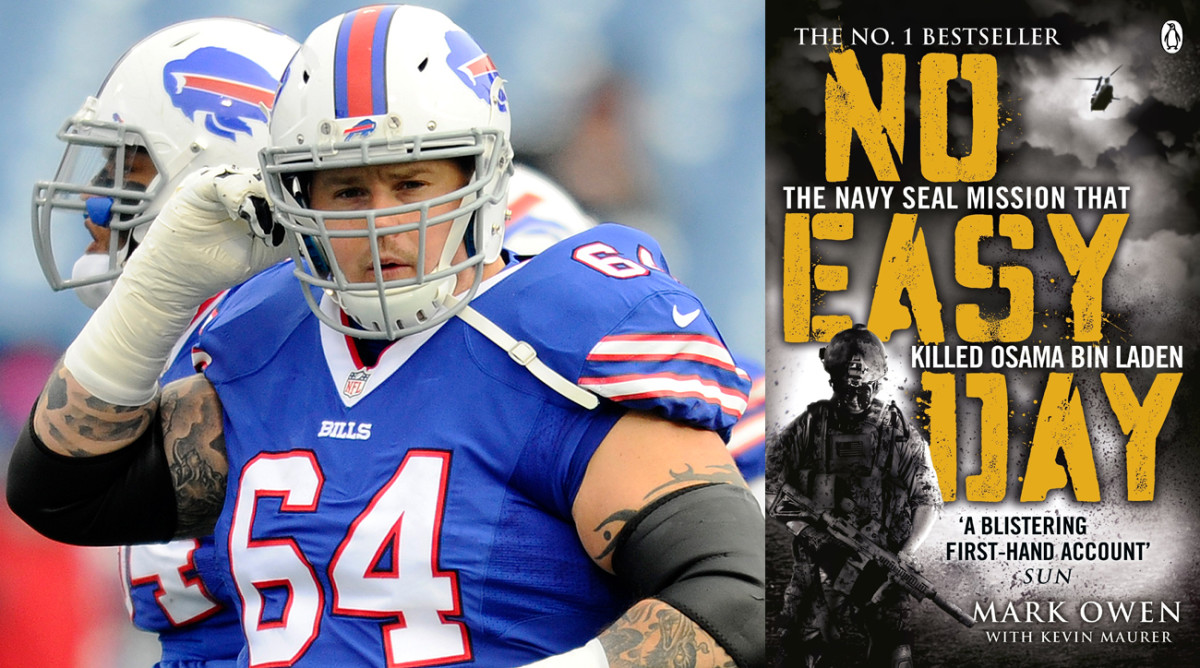
No Easy Day, by Mark Owen
Recommended by Bills guard Richie Incognito
I reached out to Incognito—who’s a little different from last week’s featured reader, Andrew Luck—to get a recommendation. Incognito gave me a good one. “I love reading military books, especially special forces/classified mission-type books,” Richie said on Sunday. “I like reading about their training and what they had to get through in order to qualify for these elite teams. ‘No Easy Day’ talks about the rigorous selection process to make it to the elite level of the Navy SEALs, SEAL Team Six. It goes on to talk about all of the missions Mark was a part of.
“What intrigued me was how the SEALs had to adjust their tactics in the middle of the war. Very similar to a football game. What they were doing was no longer efficient, and they made the changes necessary to be successful and put themselves in a better position. One reason I love military books is because there are many parallels between my world and theirs. The warrior culture and mentality is something we develop early on in life through sports. I would never compare football to war, but the win-at-all-costs mindset is what pushes us to be elite.
“The best part of the book talks about the training they put in to raid bin Laden’s compound. They began training for the mission without knowing the target but eventually found out it was bin Laden. The CIA had found him. The rest is history. They raided bin Laden's compound in Pakistan and killed the most wanted man in the world.”
I’ll be picking this one up once we get past the draft. You can get it here.
* * *
Pod People
Last Friday, Eagles EVP of football operations Howie Roseman joined me on my podcast, and we went deep into the process of identifying a quarterback in the draft, and positioning yourself to get there. Here are a couple snippets...
• On where the process on Carson Wentz was at the combine last year: “We were picking 13th with no second-round pick. We knew we wanted to move up. It was clear to us, with the research we had done, the tape we watched, being able to go to the Senior Bowl and see him throw live and interview him, that we knew we wanted to move up. And the first step? This is like the winter meetings for us, getting us all together. This is where trades take shape. And we came here with the intent of trying to move up in the draft. And when we started to talk to teams that were picking 1 and 2, it was daunting to them to move back to 13 when we didn’t have a 2. So we kind of then went to this 5-10 range and said, “Maybe we can make two moves. Maybe we can get into that 5-10 range, and be appealing to the teams at 1 and 2.” And say, “Alright, now you don’t have to move back as far, let’s find a way to make this happen.”
• Was there an Oh, crap moment when the Rams acquired the pick you were trying to get: “If an ‘Oh, crap’ moment means getting the news and walking out of the draft room and taking a moment to yourself, then yeah, I think there was an ‘Oh, crap’ moment there. It was, ‘We gotta figure this out.’ And then the conversations were the same with the Browns. If we’re gonna do this, we’re not gonna do it on draft day. We want to understand where we’re at and what we have to do, and working with the Browns to figure out a solution. That was the definition of a win-win trade for both teams. They get picks that keep on coming, certainly picks in this draft and still have a 2 coming next year. So the price of admission was high, but for us, we felt it was the only to build it the way we saw fit, to build it around a quarterback that we thought could be here for a long time. It’s interesting, because one of the compelling things for us to make the trade, because it was so many picks, was looking at the teams that drafted quarterbacks in 2004. You may say, why are you looking at teams that drafted quarterbacks in 2004? What’s interesting is those teams—the Giants, the Steelers and the Chargers—are still drafting around those quarterbacks in 2017.”
* * *
10 Things I Think I Think
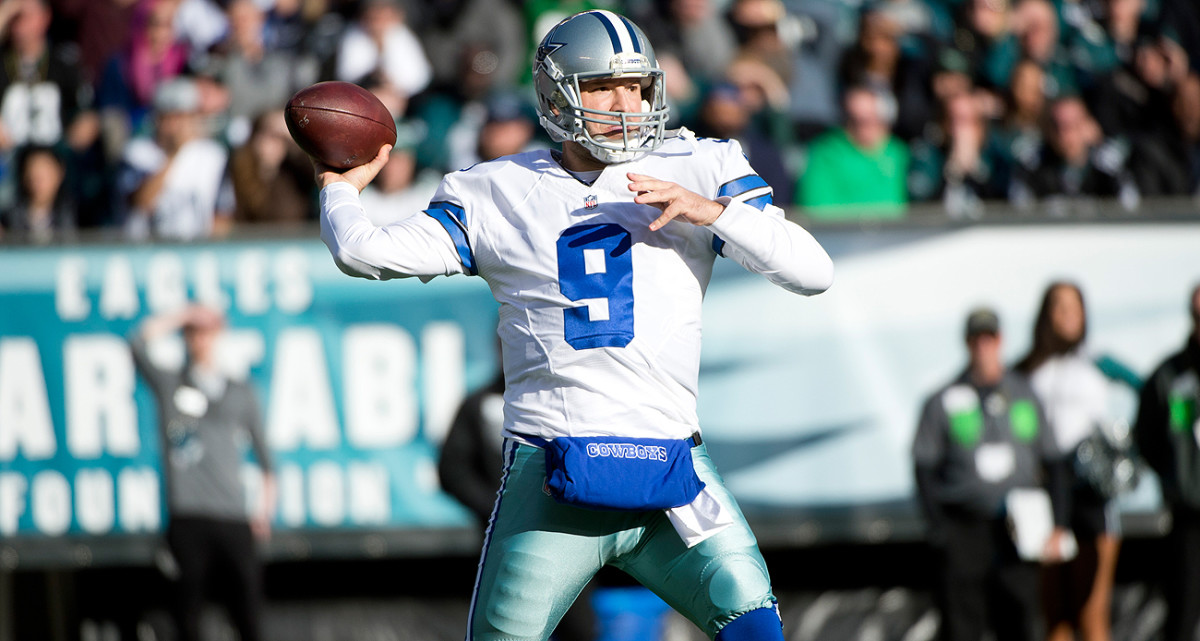
1. I think the idea of Tony Romo going to the Texans makes a lot of sense. Peter King mentioned a couple weeks back that, from a personal standpoint, Houston makes the most sense for the Cowboys quarterback for a number of reasons. And my sense is that the Houston staff would view Romo as a very good fit if he became available. Remember, Romo played in an offense that’s a basically a first cousin of Bill O’Brien’s scheme in his first four NFL season under Bill Parcells. The question, in my mind, is how far the Texans are willing to go to make it happen. Trading for him would be easier than most think. Romo is due $14 million for 2017—a below-average rate for a starting quarterback—and his base salaries of $19.5 million and $20.5 million in 2018 and ’19 would in essence serve as team options, with no guaranteed money left in Romo’s deal. The Texans do, at least as of right now, have sufficient cap space to take on the existing contract. The question is whether they’ll want to, which would probably be a tougher call for them than parting with a middling draft pick. Burgeoning star corner A.J. Bouye is likely to get upwards of $14 million per on the open market, and bringing in Romo may mean saying goodbye to Bouye and a few other free agents. My feeling is that, if the season started right now, Tom Savage would be under center for the Texans. And Houston feels good about him. But Romo would be an upgrade.
2. I think it also makes sense for the Bills to pick up Tyrod Taylor’s contract option. You’d be doing your new offensive coordinator a favor—Rick Dennison coached Taylor in Baltimore in 2014, and the Ravens offensive staff liked him enough to try to import him to Denver after Gary Kubiak took the Broncos head-coaching job. You’d be sending a positive message to the locker room. But most of all you’d buy yourself time to find a quarterback of the future. Worst thing you can do is pigeonhole yourself into a single offseason to find a long-term answer at the position. That’s how Christian Ponder goes 12th overall to the Vikings in 2011 and Brock Osweiler gets $18 million per year in Houston. Having Taylor would give the Bills, at the very least, a bridge to the next franchise quarterback. So if they like, say, Watson at 10th overall, they can take him and don’t have to play him right away. If they don’t like any of the quarterbacks or the one they like doesn’t get to them, they can wait until next year. And the terms for Taylor—it’s really a three-year, $54.1 million deal—are middling for a starting quarterback in 2017. To me, it just makes sense to stabilize the most important position on the field, even if you aren’t answering who your quarterback might be in 2022.
3. I think the Jets are doing what Mike Maccagnan and Todd Bowles probably should’ve done two years ago—swallowing hard and readying for a youth movement. The ousters of Brandon Marshall, Darrelle Revis, Nick Mangold et al signal a purge of the core of the team’s shot at a competitive rebuild, a term used internally to describe the effort to gut the roster from bottom up without bottoming out. There are just four draft picks from the John Idzik era under contract for 2017: Sheldon Richardson, Brian Winters, Quincy Enunwa and Calvin Pryor. And Mo Wilkerson is the only one left from Mike Tannenbaum’s time in green. In other words, the Jets are now virtually bereft of homegrown players in their prime earning years. That explains why, no matter how much lipstick they smeared on the 2015 season, this rough path always was bound to come.
4. I think the Seahawks were paying attention when Chiefs safety Eric Berry got paid. Earl Thomas turns 28 in May and has two years left on the extension he did in 2014. Kam Chancellor turns 29 in April and is going into a contract year. Those two have been central to the Seahawks’ defensive identity—Chancellor as a hybrid thumper and Thomas as silly-rangy centerfielder—over the last half-decade. They were rewarded for it with deals worth $17 million per year combined. Fair to guess, they’ll be more expensive to do third deals and, because of age, are naturally riskier propositions.
5. I think, on the flip side, LSU safety Jamal Adams and Ohio State safety Malik Hooker were smiling ear-to-ear at the mention of Berry’s windfall. Asked simply if he saw the news, Adams responded to me, “I did. I did. And loved it. Setting the bar!” If both Hooker and Adams go inside the top 10, it’ll be the first time in 11 years taht two safeties have gone so high in the same draft, which is only more evidence of the rising importance of the position. Adams says he recognizes that importance in how he was deployed in college, and the way he sees NFL safeties used. “You have to be able to do everything on the back end,” Adams said. “In the NFL, it’s changed. You have to have the safety that can come down inside the box or outside the box, covering the slot, covering the tight end. Blitzing. You have to be that leader, be that communicator. I think that’s why the value of the safeties went up. And there’s no choice. The game’s changed. Safeties have to as well.” We’ll have more on the evolution of the position in a future column.
6. I think I’ll repeat that offensive linemen figure to get paid on the open market this week—and the final effect could be that guards wind up paid like tackles. Why? The offensive line franchise tag number ($14.271 million) isn’t broken down by position, which means it’s based on what left tackles make. That, in turn, makes it tough to tag even a great guard. And so premier guards can make it to the market. As of now, there are 14 linemen making eight figures per. Only three of them are guards. Add to all of this that the coming draft class of offensive linemen is weak, and Kevin Zeitler, Ron Leary and Larry Warford could join the group, or at least settle on the fringes of it.
7. I think the flip side is that the market at both corner and receiver—two spots where there’s relative strength (Alshon Jeffery, Brandon Marshall, Kenny Stills, DeSean Jackson at receiver; Bouye, Stephon Gilmore, Dre Kirkpatrick at CB)—could be adversely affected by the historic quality of the draft class at corner and strong depth of the class at receiver. It’s not out of the question that Jeffery becomes the second- or third-highest-paid receiver in league history, and Bouye and Gilmore easily outdistance the deal Janoris Jenkins got last year. But there’ll be a number of would-be suitors who balk at the prices and sit tight until April, which is one reason why you shouldn’t panic if your team is strangely quiet in filling those needs this week.
8. I think the most common comp that Washington receiver John Ross got from NFL folks last fall was DeSean Jackson, something that makes the burgeoning relationship the two have built (as chronicled by our Emily Kaplan) that much more interesting. Part of that comp is based on how fast Ross looked as a collegian. Safe to say, we got confirmation Saturday that he actually is that fast.
9. I think this is the Dak Prescott Effect on the 2017 draft—when teams scramble back to see what they missed on the Cowboys’ rising star, the place most have landed is in the area of his leadership and mind for the game. And in that respect, score one for Watson, for the reason we mentioned in the quarterback section above: He crushed his interviews. Teams privately raved about his football intelligence and his personality. Prescott’s more vocal and a little more of a pied piper than Watson, but the effect those two have on their teammates, and the impression they leave on people just meeting them, isn’t much different.
10. I think these are my non-football thoughts of the week…
a. Don’t take this as any indication of my political leanings: I just never thought the President of the United States would go with a wire-tapping accusation and reality-TV review in consecutive tweets.
b. The Lakers drama, with the Buss family in full implosion, is probably juicier than any of the organizational dysfunction I’ve seen in my 12 years covering the NFL. And we’ve had some doozies.
c. Watching the end of Duke/Carolina at an Indy bar the other night was a good reminder that it’s time to start paying attention to college hoops again.
d. I always eat too much steak in Indy, so it was good to find an awesome new Mexican place downtown Saturday night. It’s called Nada, and the Modelos flow like wine there.
e. Thank you to everyone who showed so much concern over my having to fight through sickness at the combine. It’s not for me to say, but many noted my courage over these past six days. #warrior
f. Coffeenerdness: I can’t remember ever only drinking Starbucks for an entire work trip, but I only drank Starbucks on this trip. I’m excited to get home.
g. Beernerdness: I just want to make this clear … Beirut (or beer pong for the less-informed) is meant to be played with Natural Light.
h. I can’t remember there ever being less buzz around Red Sox spring training than there has been this year in Boston—and that’s after the team acquired a new ace in Chris Sale. And I’m wondering if it’s like that for baseball all over the country now.
i. Of course, in the town I live in and the one I grew up in, it’s a lot easier to find kids playing lacrosse in the spring than it is to find them playing baseball.
j. And I know Peter’s column is probably not the place to be taking shots at baseball, so that’s the end of that.
* * *
The Adieu Haiku
It’s my first Haiku.
And it is not any good.
My pod is better.
• Question or comment? Email us at talkback@themmqb.com.
